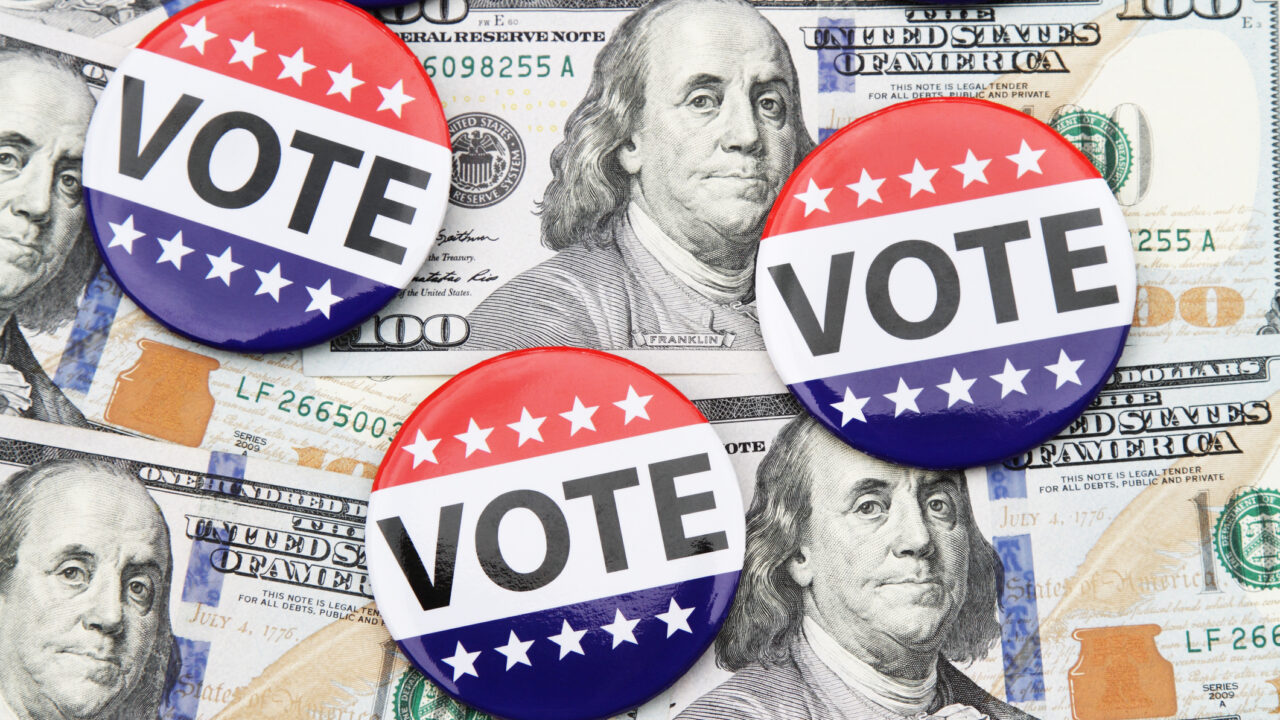Stay Informed
"*" indicates required fields
Blog

Government Unions Spent $33 Million in Recent Pennsylvania Elections
When it comes to politics, government unions are big spenders—and they overwhelmingly favor one side of the political spectrum. In Pennsylvania, unions representing public sector workers spent millions of membership dues to support predominantly left-leaning causes and candidates, according to a recent report by the Commonwealth Foundation.
The report found that government unions—such as the Pennsylvania State Education Association and the American Federation of State, County, and Municipal Employees—spent a combined $33.5 million on electoral politics in the recent 2023–24 election cycle. Nearly half of these donations—about $15 million—originated from union membership dues. Membership dues financed executive compensation, electioneering supplies, and political consultation.
This recent election follows a trend of political donations by government unions in the Keystone State. Since 2007, government unions have spent $227 million on Pennsylvania elections.
Most of these donations favored Democratic candidates. During the 2023–24 election cycle, government unions contributed $6.47 million to Democrats in the state legislature and only $660,615 to Republicans—a 9-to-1 discrepancy. Nearly 95 percent of $14.2 million in political action committee contributions went toward Democratic candidates.
This lopsided favoritism is suspicious, the report contends. “In a swing state like Pennsylvania, it’s impossible that more than 9-in-10 union members support the same candidates and causes their union bosses back with political donations,” said Andrew Holman, a policy analyst with the Commonwealth Foundation.
Holman suggests how unions spend their membership dues may come as a surprise to members. “With a long-standing record of transparency issues within these unions, many members remain in the dark about what their dues are actually funding,” said Holman.
Pennsylvania House Democrats were the biggest recipients of government union donations. House Democratic candidates received about $4.2 million in donations from government unions.
Government unions played a significant role in helping the Democrats secure their slim one-seat majority in the state House of Representatives. State Rep. Frank Burns, a Democrat from Cambria County, received $60,000 in direct contributions from government unions. Additionally, government unions donated $706,000 to the House Democratic Campaign Committee, which spent more than $3.4 million on Burns. Burns won the competitive race for the 72nd House District, securing a one-seat majority for the House Democrats.
Other prominent House Democrats also benefited from this funding. The top recipients of direct donations from government unions included House Democrats House Speaker Joanna McClinton ($463,000), House Majority Leader Matt Bradford ($338,500), and state Rep. Jordan Harris ($287,000).
State law grants some advantages to government unions, providing them with easy access to their members’ income. With exclusive representation, public sector unions monopolize government workspaces and bargaining units. They also leverage taxpayer-financed systems, such as the state’s public payroll system, to collect dues and fees. Typically, state law restricts lawmakers from using taxpayer resources for political contributions, but the law doesn’t apply to government unions.
One lawmaker has already presented legislation to close this loophole. House Bill 466—sponsored by state Rep. Milou Mackenzie, a Republican representing parts of Lehigh, Montgomery, and Northampton counties—would prohibit “government resources, including the government payroll system, from being used for political purposes, regardless of the cost associated.”
Regardless of new legislation, government unions remain a powerful political force in Harrisburg. “Armed with millions of dollars in resources and given special legal privileges, government union executives exert undue influence on Pennsylvania’s political process,” the Commonwealth Foundation report concluded.
The full report is available on the Commonwealth Foundation’s website.
Connect With Us
Email Sign Up
"*" indicates required fields